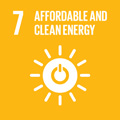- Docente: Maurizio Fiorini
- Credits: 6
- SSD: CHIM/07
- Language: Italian
- Teaching Mode: Traditional lectures
- Campus: Bologna
- Corso: First cycle degree programme (L) in Chemical and Biochemical Engineering (cod. 8887)
-
from Sep 17, 2024 to Dec 19, 2024
Learning outcomes
This course provides students with an appreciation and understanding of the fundamental background and concepts of Chemistry in quantitative terms. The following areas are covered: structure of matter, chemical bond (ionic, covalent and metallic), reactions and stoichiometry, properties and structure of gas, liquid and solids; acid-base and oxidation-reduction chemistry; chemical energetic, chemical equilibria, kinetics (rate of reactions)
Course contents
Atomic structure, atoms and molecules. Mole and Avogadro's number. The nuclear atom, isotopes. Stable nuclides and radionuclides. Radioactivity.
Electronic structure of atoms, wavefunctions quantum numbers and atomic orbitals. Electronic configuration of elements in their ground state. Periodic system and periodic properties.
Chemical bond, ionic bond and lattice energy. Born-Haber cycles. The properties of ionic solids. Covalent bond:introduction to Valence Bond theory and molecular orbital theory (LCAO-MO). Sigma and pi-bonds. Polarised bonds. Molecular geometry, hybrid orbitals. Polar and non-polar molecules. Weak bonds: hydrogen bond, Van der Waals interactions.
Gas: state equation for perfect gas model; real gas: Van der Waals
equation.
Chemical reactions, stoichiometry. Balance of reactions without/with electron transfer. Yield of a reaction.
Chemical nomenclature and the principal class of inorganic compounds.
Solutions and expression of concentration.
Thermochemistry and thermodynamics: work, heat, the first
principle. Internal energy and enthalpy. Specific heat and molar
heat. Standard enthalpy change of reaction (formation, combustion).
Hess' law with practical applications. The second principle:
entropy and disorder. Entropy and entalpy relationship: Gibbs
energy. Conditions for spontaneous chemical reactions.
Chemical equilibrium, the equilibrium constant K Effect of pressure and temperature changes on chemical equilibrium. Le Chatelier principle. Ionic equilibrium in aqueous solution, the pH scale. Acids and bases (Arrhenius and Bronsted-Lowry). Acid-base reactions.
Chemical kinetics, rate of a reaction and its expression. Partial and overall reaction orders. Rate constant. Arrhenius' equation, theory of molecular collisions, the activated complex and the activation energy. Homogeneous and heterogeneous catalysis.
Readings/Bibliography
M. Silberberg and P. Amateis. Chemistry: The Molecular Nature of
Matter and Change 7th ed. McGraw Hill, 2014
(a previous edition of any of these books
is still a good textbook)
This is just a list of textbook, any of which is suitable for individual studying. More detailed information about this topic is provifded at the beginning of the course.
Teaching methods
The course isorganised into frontal lectures followed by exercise sessionsto practice with the concepts and theories learned during the lectures.
Assessment methods
Grading policy: two written tests followed by an oral exam.
First written test: after four-five weeks of the course, covering topics of the lectures up to that week. Written test is graded a few points more that 30. With a grade < 18, the test is FAILED. Passing the first written test is MANDATORY to be admitted to the second. This latter takes place right at the end of the lecture term. Students passing both written tests are requested to register for the oral exam in early January.
All students who failed the first written test, passed the first but failed the second or did not take the oral exam at the beginning of January, must take a written test on the whole program of the course. Upon successfully passing a written test, the oral exam must be taken soon after.
Dates of all kind of tests will be published on Students on line platform. Registration for any test is MANDATORY through that platform. Any other request to register, such as by mail, will not be deemed eligible.
Detailed information about the grading of the test is given during the first lecture.
Teaching tools
The course is organised into frontal lectures followed by exercise
sessions to practice with the concepts and theories learned during
the lectures.
All teaching aids can be found on the website dedicated to the course.
Office hours
See the website of Maurizio Fiorini
SDGs


This teaching activity contributes to the achievement of the Sustainable Development Goals of the UN 2030 Agenda.
